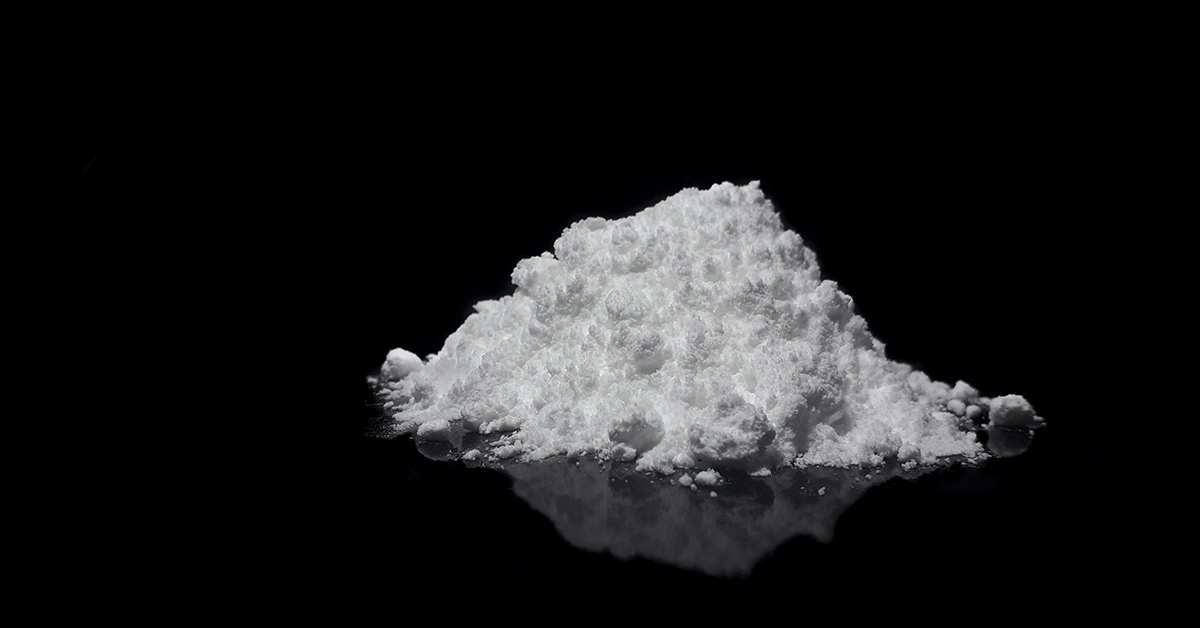Scientists in China have genetically modified a tobacco plant to produce cocaine in its leaves. Cocaine is a chemical compound called tropane alkaloid, which naturally appears in the leaves of the Erythroxylum coca plant. The drug is infamous for its abuse and highly addictive nature. Still, the U.S. Food and Drug Administration (FDA) has approved the use of cocaine in topical anesthesia of mucous membranes and a nasal spray. This new discovery could open the doors to manufacturing the drug or producing similar compounds for pharmaceutical purposes.
Genetically Modified Tobacco Plant Grows Cocaine
To manufacture cocaine, one needs to understand exactly how it forms. However, researchers have struggled to determine how the coca plant produces tropane alkaloids. They have been able to understand most of the process, but one key stage remains a mystery: How does a chemical precursor (called MPOA) become a section of the cocaine molecule? Well, the scientists from the Kunming Institute of Botany in China say they know the answer.
In a new paper in the Journal of the American Chemical Society, they explain how they identified two new enzymes (EnCYP81AN15 and EnMT4) that appear during the production of cocaine. So, they genetically modified a plant closely related to tobacco (Nicotiana benthamiana) to grow these enzymes, and the tobacco plant successfully produced 400 nanograms of cocaine per milligram of dried leaf. That’s only 1/25th of the yield of a typical coca plant, but the experiment is an exciting feat all the same. [1]
“At present,” said Sheng-Xiong Huang, a leader on the study, “the available production of cocaine in tobacco is not enough to meet the demand on a mass scale.” Therefore, this study demonstrates a new potential avenue for manufacturers. [2]
“[This discovery] may allow pharmaceutical companies to ferment it, essentially, and so completely get rid of plant-based production,” Benjamin Lichman, a researcher at the University of York who wasn’t involved with the study. He also speculates that genetically modified plants may become incorporated into the illegal drug trade in the future. “That will have huge impacts on supply chain and potentially impacts on, even, illicit production.” However, it’s highly unlikely to change anything as of yet because using genetically modified plants like tobacco is more costly and intensive than the current method of manufacturing cocaine from the coca plant. [3]
Read: Woman’s ‘cancer vanished after using cannabis and magic mushrooms’
Cocaine and the Potential for New Medicine
More understanding of cocaine and its properties could lead to the development of new medicines. Cocaine has been used as an anesthesia in the past, and although it’s approved in topical creams and nasal sprays today, it could have a lot more potential aside from being a party drug. With this new knowledge of how it grows, scientists may be able to recreate the drug without the addictive and harmful aspects. [4]
Tropane alkaloids, in general, hold an important place in today’s pharmacopeia. They are commonly used in medications to soothe spasms in digestive and urinary tract conditions. They’re also found in ophthalmological eye drops used during examinations. Genetically modified tobacco that can produce cocaine leads to the possibility of modifying other tropane alkaloids, especially those already well-established in medicine. [5]
Aside from its specific pharmaceutical uses, cocaine is an illegal stimulant with many health risks. The drug speeds the workings of the brain, leading to feelings of euphoria. Cocaine is made from extractions from the coca plant mixed with other chemicals to form its signature white powder. However, because there are no regulations overseeing this production, consumers can’t know the potency of the cocaine, which depends on how many other chemicals are added. These fillers are added to purposely diluted the drug so sellers could make more profit.
The Risks of Cocaine
Cocaine releases many feel-good chemicals in the brain, which is why the drug is addictive. The addiction is not just psychological; the brain can become biologically dependent on these chemicals. That means a regular user may not be able to feel pleasure without cocaine, leaving them with intense cravings for months or even years after going sober. Withdrawal symptoms can go on for weeks, and alongside the cravings can come depression, anxiety, fits of anger, nausea, tremors, muscle pain, and sleeping issues. [6]
Regular use of cocaine can result in many physical problems and death. Inhaling or snorting the drug can damage the lining and structure in the nose; injecting can cause blood poisoning, blood-borne viruses, and skin abscesses. Long-term use could also lead to heart problems, respiratory issues, severe depression, and other mental health problems, like cocaine psychosis, which involves aggression and disturbing hallucinations. [7]
Keep Reading: Is a Virus We All Have Causing Multiple Sclerosis?
Sources
- “Discovery and Engineering of the Cocaine Biosynthetic Pathway.” ACS Publications. Yong-Jiang Wang. November 14, 2022
- “Scientists Gene Hack Random Plant to Grow Cocaine.” Futurism. Maggie Harrison. November 28, 2022
- “Scientists Figure Out How To Synthesize A Load Of Cocaine From Tobacco.” IFL Science. Ben Taub. November 28, 2022
- “Researchers have discovered a way to produce cocaine from a tobacco plant.” Interesting Engineering. Ayesha Gulzar. November 28, 2022
- “The Chemical Synthesis and Applications of Tropane Alkaloids.” Science Direct. Samson Afewerki. 2019
- “The Neurobiology of Cocaine Addiction.” Sci Pract Perspect. Eric J. Nestler, M.D., Ph.D. December 2005
- “Cocaine.” Better Health.

